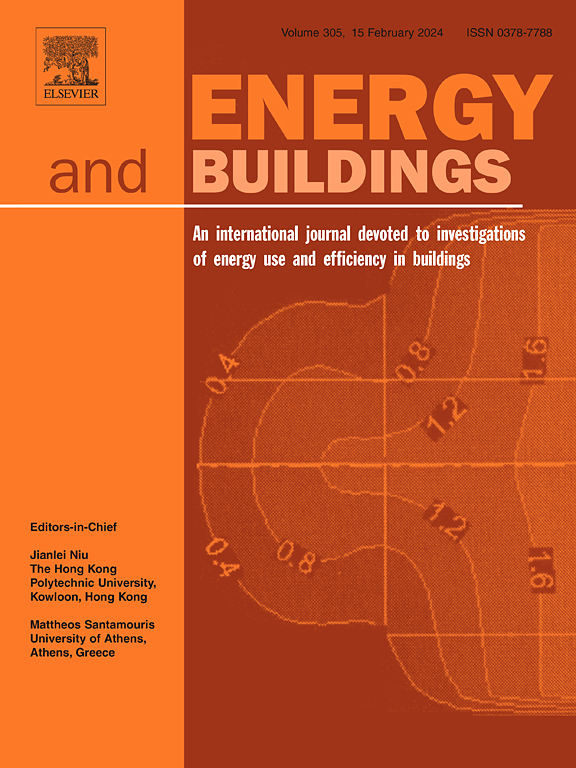辐射地板和风机盘管组合冷却系统运行特性的实验研究
IF 6.6
2区 工程技术
Q1 CONSTRUCTION & BUILDING TECHNOLOGY
引用次数: 0
摘要
地板辐射和风机盘管冷却(RF-FCC)系统因其高热舒适度和高能效而在住宅和办公建筑中有着广泛的应用。有关 RF-FCC 系统的研究通常侧重于提高制冷量、降低能耗和优化控制策略,而忽略了系统运行时地板辐射表面温度和室内温度的变化。因此,本研究采用实验方法对 RF-FCC 系统的地板辐射表面温度和室内温度进行分析,为 RF-FCC 系统的应用提供理论依据。然后,从系统运行时地板辐射表面温度的变化、停机后地板辐射表面温度的变化、室内负荷突变对室内温度的影响以及不同室外天气条件对室内温度的影响等方面确定 RF-FCC 系统的运行特性。结果表明,在不同天气条件下,地板辐射表面温度稳定在 23 °C左右。停机后,地板辐射温度的变化遵循一阶指数函数增长规律。室内负荷阶跃变化仅对室内各墙面温度产生轻微影响,而室内负荷阶跃变化对地板辐射表面温度的影响微乎其微。本文章由计算机程序翻译,如有差异,请以英文原文为准。
Experimental study on the operating characteristic of a combined radiant floor and fan coil cooling system
The radiant floor and fan coil cooling (RF–FCC) system has a wide application range in residential and office buildings due to its high thermal comfort and energy efficiency. The studies on RF–FCC systems often focus on increasing the cooling capacity, reducing the energy consumption, and optimizing the control strategies while overlooking variations in radiant floor surface temperature and indoor temperature during system operations. Therefore, this study uses experimental methods to analyze the radiant floor surface and indoor temperature of the RF-FCC system in order to provide a theoretical basis for the application of the RF–FCC systems. The operating characteristics of the RF-FCC system are then determined from the variations of the radiant floor surface temperature during system operation, variations of the radiant floor surface temperature after shutdown, impact of the sudden variations of the indoor load on the indoor temperature, and impacts of different outdoor weather conditions on the indoor temperature. The obtained results show that the radiant floor surface temperature stabilizes at approximately 23 °C under different weather conditions. After shutdown, the variation of the radiant floor temperature follows the first-order exponential function growth law. The indoor load step change only slightly affects the temperature of each indoor wall surface, while indoor load step change exerts a minimal impact on the radiant floor surface temperature.
求助全文
通过发布文献求助,成功后即可免费获取论文全文。
去求助
来源期刊

Energy and Buildings
工程技术-工程:土木
CiteScore
12.70
自引率
11.90%
发文量
863
审稿时长
38 days
期刊介绍:
An international journal devoted to investigations of energy use and efficiency in buildings
Energy and Buildings is an international journal publishing articles with explicit links to energy use in buildings. The aim is to present new research results, and new proven practice aimed at reducing the energy needs of a building and improving indoor environment quality.
 求助内容:
求助内容: 应助结果提醒方式:
应助结果提醒方式:


